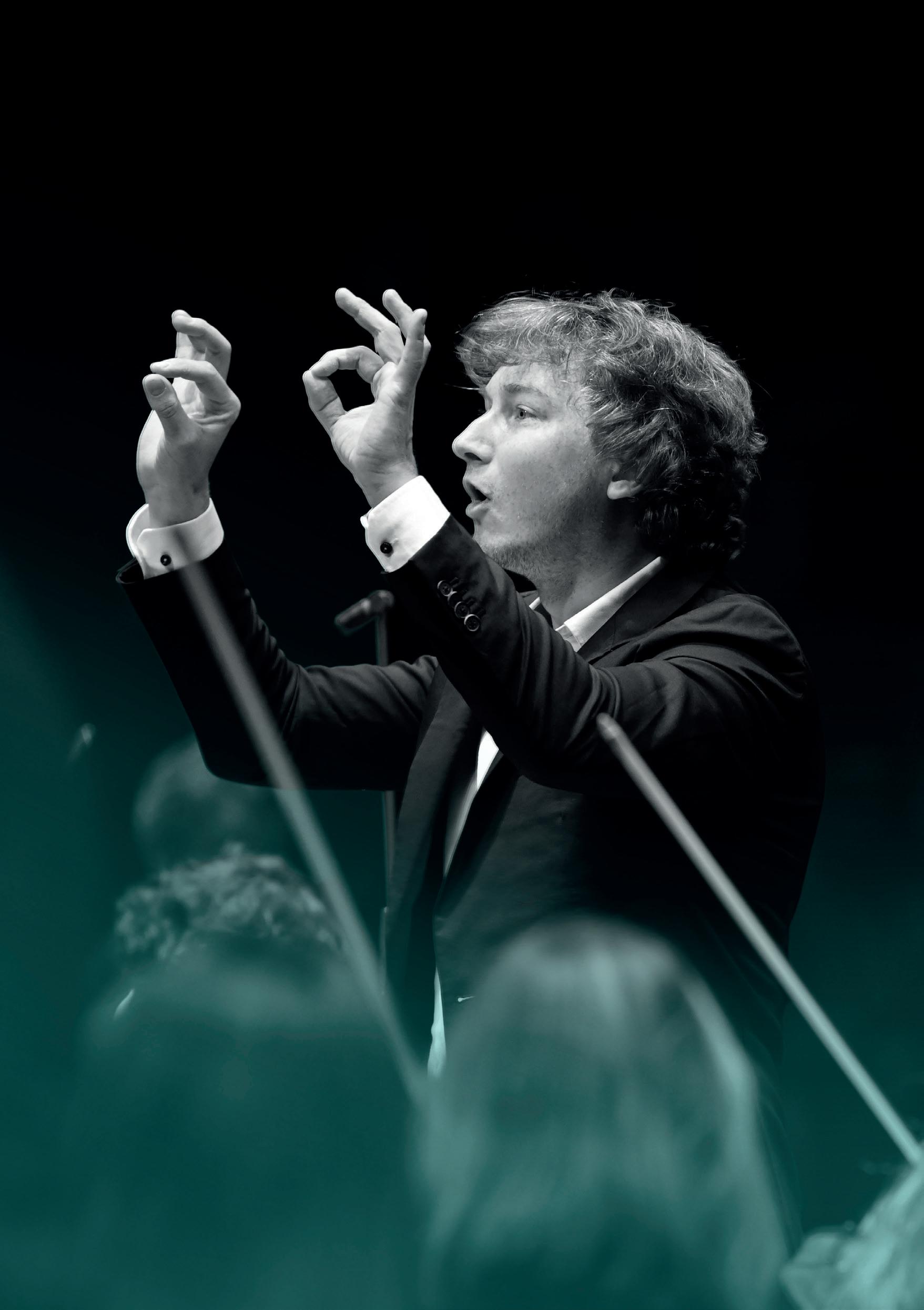

From Darkness to Light


From Darkness to Light 2025/26 Season Opener
Kindly supported by Donald and Louise MacDonald in memory of Euan MacDonald
Thursday 2 October, 7.30pm Usher Hall, Edinburgh
* Friday 3 October, 7.30pm City Halls, Glasgow
Saturday 4 October, 7.30pm Perth Concert Hall
STRAUSS Metamorphosen
MACMILLAN Veni, Veni Emmanuel
Interval of 20 minutes
BEETHOVEN Symphony No.5
Maxim Emelyanychev conductor
Colin Currie percussion
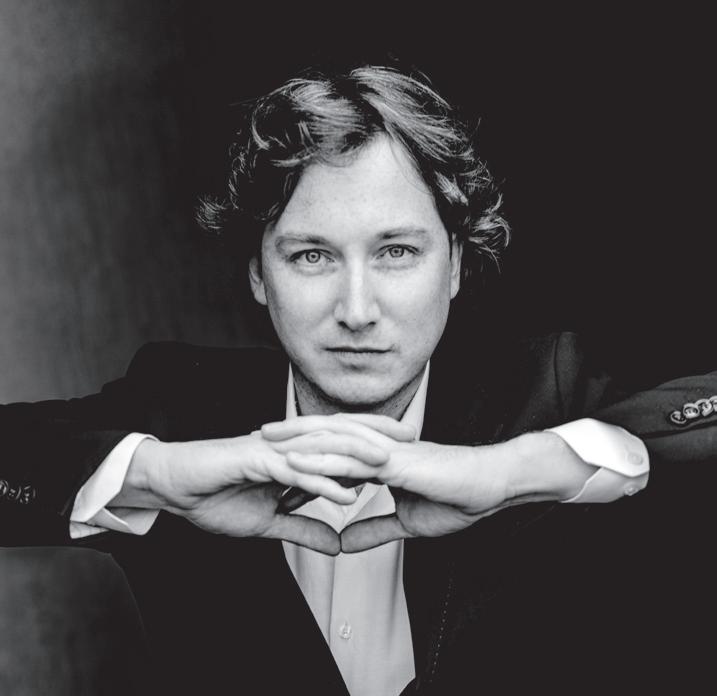
Maxim Emelyanychev
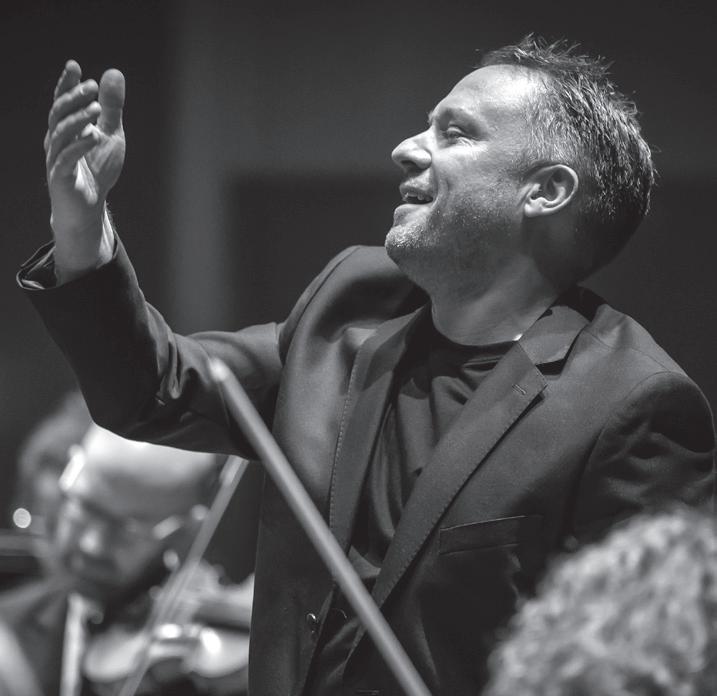

* This performance is being recorded for deferred broadcast on BBC Radio 3’s 'In Concert' series.
4 Royal Terrace, Edinburgh EH7 5AB
+44 (0)131 557 6800 | info@sco.org.uk | sco.org.uk The Scottish Chamber Orchestra is a charity registered in Scotland No. SC015039. Company registration No. SC075079.
© Andrej Grilc Colin Currie
© Andy Catlin
THANK YOU
Principal Conductor's Circle
Our Principal Conductor’s Circle are a special part of our musical family. Their commitment and generosity benefit us all – musicians, audiences and creative learning participants alike.
Annual Fund
James and Patricia Cook
Visiting Artists Fund
Harry and Carol Nimmo
Anne and Matthew Richards
International Touring Fund
Gavin and Kate Gemmell
Creative Learning Fund
Sabine and Brian Thomson
CHAIR SPONSORS
Conductor Emeritus Joseph Swensen
Donald and Louise MacDonald
Chorus Director Gregory Batsleer
Anne McFarlane
Principal Second Violin
Marcus Barcham Stevens
Jo and Alison Elliot
Second Violin Rachel Smith
J Douglas Home
Principal Viola Max Mandel
Ken Barker and Martha Vail Barker
Viola Brian Schiele
Christine Lessels
Viola Steve King
Sir Ewan and Lady Brown
Principal Cello Philip Higham
The Thomas Family
Sub-Principal Cello Su-a Lee
Ronald and Stella Bowie
Cello Donald Gillan
Professor Sue Lightman
American Development Fund
Erik Lars Hansen and Vanessa C L Chang
Productions Fund
Anne, Tom and Natalie Usher
Bill and Celia Carman
Scottish Touring Fund
Eriadne and George Mackintosh
Claire and Anthony Tait
Cello Eric de Wit
Jasmine Macquaker Charitable Fund
Principal Flute André Cebrián
Claire and Mark Urquhart
Principal Oboe
The Hedley Gordon Wright Charitable Trust
Sub-Principal Oboe Katherine Bryer
Ulrike and Mark Wilson
Principal Clarinet Maximiliano Martín
Stuart and Alison Paul
Principal Bassoon Cerys Ambrose-Evans
Claire and Anthony Tait
Sub-Principal Bassoon Alison Green
George Rubienski
Principal Horn Kenneth Henderson
Caroline Hahn and Richard Neville-Towle
Principal Timpani Louise Lewis Goodwin
Geoff and Mary Ball
Funding Partners



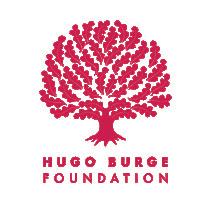
SCO Donors
Diamond
The Cockaigne Fund
Malcolm and Avril Gourlay
John and Jane Griffiths
James and Felicity Ivory
George Ritchie
Tom and Natalie Usher
Platinum
E.C. Benton
Michael and Simone Bird
Silvia and Andrew Brown
David Caldwell in memory of Ann
Dr Peter Williamson and Ms Margaret Duffy
Judith and David Halkerston
David and Elizabeth Hudson
Helen B Jackson
Dr and Mrs Peter Jackson
Dr Daniel Lamont
Graham and Elma Leisk
Professor and Mrs Ludlam
Chris and Gill Masters
Duncan and Una McGhie
Anne-Marie McQueen
James F Muirhead
Robin and Catherine Parbrook
Patrick and Susan Prenter
Mr and Mrs J Reid
Martin and Mairi Ritchie
Hilary E Ross
Elaine Ross
Sir Muir and Lady Russell
Jill and Brian Sandford
Michael and Elizabeth Sudlow
Robert and Elizabeth Turcan
Alan and Sue Warner
Anny and Bobby White
Robert Mackay and Philip Whitley
Finlay and Lynn Williamson
Ruth Woodburn
Gold
Peter Armit
Adam Gaines and Joanna Baker
John and Maggie Bolton
Elizabeth Brittin
Kate Calder
James Wastle and Glenn Craig
Jo and Christine Danbolt
James and Caroline Denison-Pender
Andrew and Kirsty Desson
David and Sheila Ferrier
Chris and Claire Fletcher
James Friend
Iain Gow
Margaret Green
Christopher and Kathleen Haddow
Catherine Johnstone
Julie and Julian Keanie
Gordon Kirk
Janey and Barrie Lambie
Mike and Karen Mair
Roy and Svend McEwan-Brown
John and Liz Murphy
Tom Pate
Maggie Peatfield
Sarah and Spiro Phanos
Charles Platt
Alison and Stephen Rawles
Andrew Robinson
Olivia Robinson
Anne McAlister and Philip Sawyer
Irene Smith
Dr Jonathan Smithers
Ian S Swanson
Ian and Janet Szymanski
John-Paul and Joanna Temperley
Douglas and Sandra Tweddl
Bill Welsh
Catherine Wilson
Neil and Philippa Woodcock
Silver
Roy Alexander
Fiona and Neil Ballantyne
The Batsleer Family
Jack Bogle
Jane Borland
Alan Borthwick
Dinah Bourne
Michael and Jane Boyle
Mary Brady
John Brownlie
Laura Buist
Robert Burns
Sheila Colvin
Lorn and Camilla Cowie
Adam and Lesley Cumming
Dr Wilma Dickson
Sylvia Dow
Colin Duncan in memory of Norma Moore
Raymond Ellis
Dr and Mrs Alan Falconer
Sheila Ferguson
Dr William Irvine Fortescue
Dr David Grant
Anne Grindley
Andrew Hadden
J Martin Haldane
Ronnie and Ann Hanna
Roderick Hart
Norman Hazelton
Ron and Evelynne Hill
Philip Holman
Clephane Hume
Tim and Anna Ingold
David and Pamela Jenkins
Margaret Mortimer and Ken Jobling
Ross D. Johnstone
Professor Christopher and Mrs Alison Kelnar
Dr Ian Laing
Geoff Lewis
Dorothy A Lunt
Vincent Macaulay
James McClure in memory of Robert Duncan
Ben McCorkell
Lucy McCorkell
Gavin McCrone
Michael McGarvie
Brian Miller
Alistair Montgomerie
Andrew Murchison
Pamela Andrews and Alan Norton
Gilly Ogilvy-Wedderburn
John Peutherer in memory of Audrey Peutherer
James S Potter
Timothy Barnes and Janet Sidaway
Catherine Steel
John and Angela Swales
Takashi and Mikako Taji
C S Weir
Susannah Johnston and Jamie Weir
We are indebted to everyone acknowledged here who gives philanthropic gifts to the SCO of £300 or greater each year, as well as those who prefer to remain anonymous.
We are also incredibly thankful to the many individuals not listed who are kind enough to support the Orchestra financially on a regular or ad hoc basis. Every single donation makes a difference.
Become a regular donor, from as little as £5 a month, by contacting Hannah Wilkinson on 0131 478 8364 or hannah.wilkinson@sco.org.uk.
“…an orchestral sound that seemed to gleam from within.”
THE SCOTSMAN
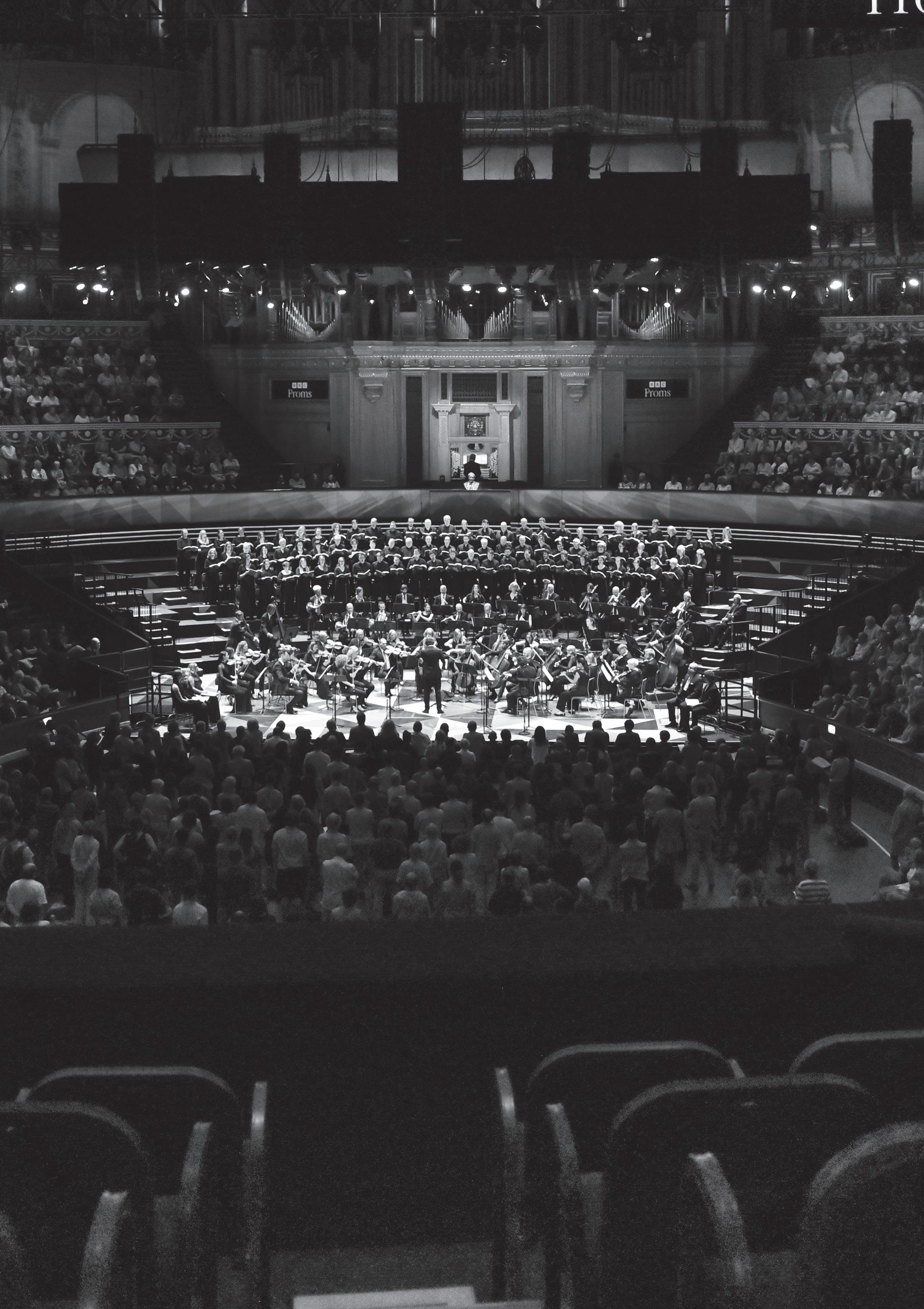
HM The King Patron
Donald MacDonald CBE
Life President
Joanna Baker CBE Chair
Gavin Reid LVO
Chief Executive
Maxim Emelyanychev
Principal Conductor
Andrew Manze
Principal Guest Conductor
Joseph Swensen
Conductor Emeritus
Gregory Batsleer
Chorus Director
Jay Capperauld
Associate Composer
© Chris Christodoulou
Your Orchestra Tonight
Information correct at the time of going to print
First Violin
Stephanie Gonley
Afonso Fesch
Kyra Humphreys
Aisling O’Dea
Amira Bedrush-McDonald
Esther Kim
Lyrit Milgram
Kirsty Main
Second Violin
Marcus Barcham Stevens
Ilhem Ben Khalfa
Tom Hankey
Elvira van Groningen
Catherine James
Abigail Young
Jess Hall
Serena Whitmarsh
Viola
Max Mandel
Francesca Gilbert
Katie Heller
Steve King
Rebecca Wexler
Kathryn Jourdan
Cello
Philip Higham
Su-a Lee
Donald Gillan
Eric de Wit
Niamh Molloy
Bass
Edward Merritt
Jamie Kenny
Ben Havinden-Williams
Flute
André Cebrián
Marta Gómez
Adam Richardson
Piccolo
Marta Gómez
Adam Richardson
Oboe
Tom Blomfield
Katherine Bryer
Cor Anglais
Katherine Bryer
Clarinet
Maximiliano Martín
William Stafford
Bass Clarinet
William Stafford
Bassoon
Cerys Ambrose-Evans
Alison Green
Gillian Horn
Contrabassoon
Alison Green Horn
Kenneth Henderson
Jamie Shield
Gavin Edwards
Trumpet
Peter Franks
Shaun Harrold
Simon Bird
Trombone
Duncan Wilson
Nigel Cox
Alan Adams
Timpani
Stefan Beckett
Cerys Ambrose-Evans
Principal Bassoon
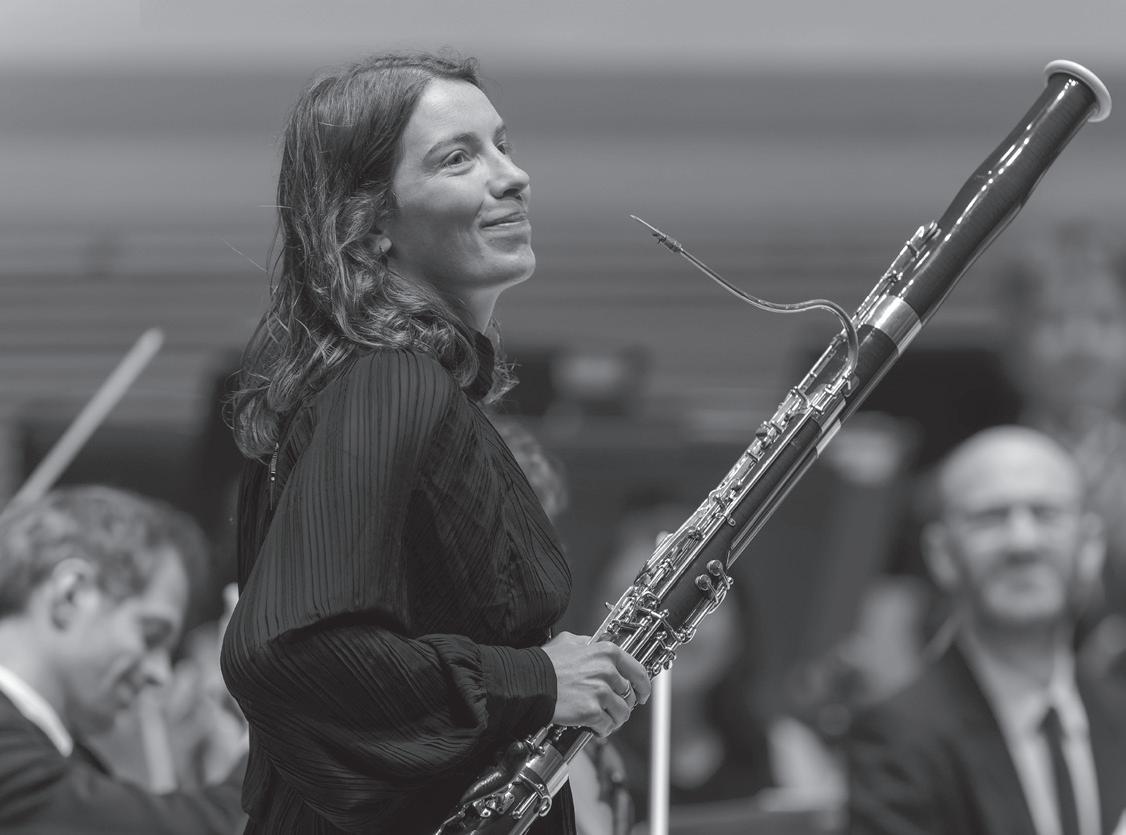
What You Are About To
Hear
R STRAUSS (1864-1949)
Metamorphosen, TrV 290 (1945)
MACMILLAN (b. 1959)
Veni, Veni Emmanuel (1992)
Introit - Advent Heartbeats
Dance - Hocket
Transition: Sequence I
Gaude, Gaude
Transition: Sequence II
Dance - Chorale
Coda - Easter
BEETHOVEN (1770-1827)
Symphony No.5 in C minor, Op. 67 (1804–08)
Allegro con brio
Andante con moto
Scherzo: Allegro
Allegro – Presto
‘Music is, by its very nature, essentially powerless to express anything at all, whether a feeling, an attitude of mind, a psychological mood, a phenomenon of nature.’ That’s Igor Stravinsky, writing in his 1936 autobiography Chronicles of My Life. It’s one of the iconoclastic composer’s most famous pronouncements, and one of his most controversial – and it’s almost certainly rather misunderstood, too. Stravinsky was railing against the idea that music could be intentionally designed to tell stories or reliably evoke specific emotions, rather than disputing that it could ever make listeners feel happy or sad (or any number of other emotions).
Nonetheless, the idea that music is unable to conjure profound feelings is surely refuted beyond doubt by the three hugely powerful pieces in tonight’s programme, which together take us from deepest despair to blazing triumph and optimism – in a fittingly celebratory concert to launch the Scottish Chamber Orchestra’s new Season.
For Richard Strauss, the decimation of the Second World War represented the destruction of what he held most dear in his life and identity: his Metamorphosen represents an unfliching wail of agony, albeit one expressed in lovingly crafted, achingly moving sounds. Sir James MacMillan includes both darkness and light in his glittering percussion concerto Veni, Veni Emmanuel, whose themes take in birth, death and ultimate transcendence. Finally, Ludwig van Beethoven established a particularly heroic template for the symphony with his Fifth, one that moves from struggle to triumph, and which inspired countless composers who came after him.
We begin, however, in August 1944, in the Alpine resort town of Garmisch-Partenkirchen
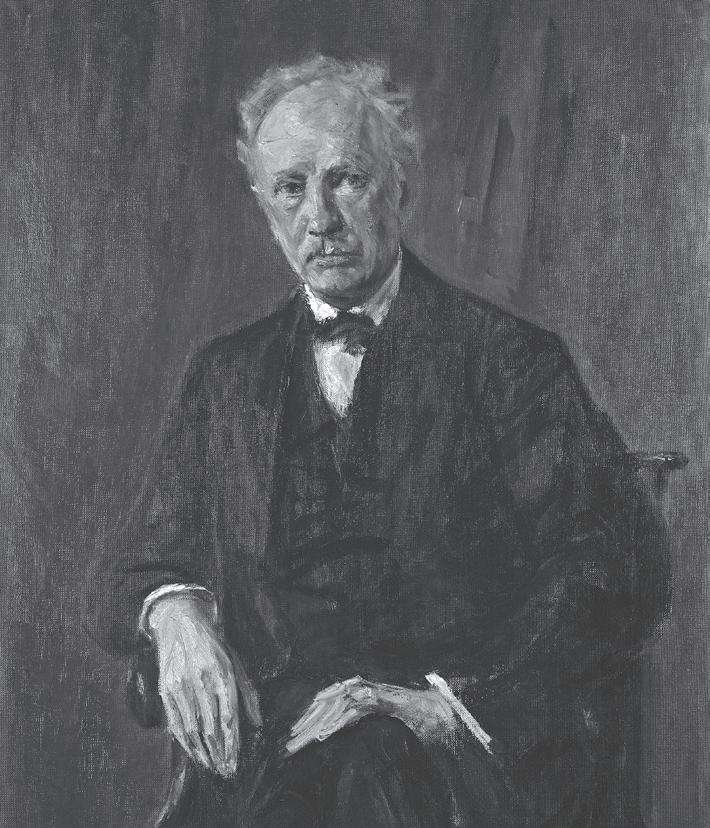
in Bavaria, where Richard Strauss owned a large, elegant villa, and where he was holed up while the Second World War ground on to what would prove to be its final stages. The composer was almost 80 when, that month, he began work on what would become Metamorphosen. His immediate inspiration came from the destruction of the Hoftheater in his birthplace of Munich by Allied bombers in October 1943. About that particular event, he wrote to his biographer: ‘The burning of the Munich Hoftheater, the place consecrated to the first Tristan and Meistersinger performances, in which 73 years ago I heard Freischütz for the first time, where my good father sat for 49 years as first horn in the orchestra – where at the end of my life I experienced the keenest sense of fulfilment of the dreams of authorship in ten Strauss productions – this was the greatest catastrophe which has ever been brought into my life, for which there can be no consolation and, in my old age, no hope.’
His Metamorphosen represents an unfliching wail of agony, albeit one expressed in lovingly crafted, achingly moving sounds.
Almost immediately, Strauss began sketching ideas for a work he initially called Trauer um München (‘Mourning for Munich’). When he later received a request from conductor and philanthropist Paul Sacher for a new work for his Collegium Musicum Zürich, Strauss developed those initial ideas into the piece we know today.
Metamorphosen is widely seen as Strauss’ lament for what he viewed as the destruction of centuries-old German culture. But in the context of the events of the Second World War and the decisions that Strauss took at the time, that’s an appraisal that raises immediate questions. Strauss was never a member of the National Socialist Party, but he proved accommodating to its demands on several occasions, notably in the 1930s. When Joseph Goebbels, minister of propaganda, appointed Strauss President of the newly formed Reichsmusikkammer in 1933 without the composer’s consent (or
Richard Strauss
even knowledge), Strauss had little choice but to accept, although he vowed to remain apolitical (and was dismissed in 1935 after writing a letter to Jewish poet Stefan Zweig questioning Nazi policies). Also in 1933, Strauss stepped in to conduct Wagner’s Parsifal in Bayreuth when the scheduled conductor, Arturo Toscanini, withdrew in protest at Nazi treatment of Jewish artists. Toscanini later said: ‘To Strauss the composer, I take off my hat. To Strauss the man, I put it back on again.’
Strauss used his position for protest and resistance too, however. He continued to collaborate with Zweig on the opera Die schweigsame Frau, premiered in Dresden in 1935, but it only lasted three performances before being banned by the authorities. He went to great efforts to protect his Jewish daughter-in-law Alice and half-Jewish grandson Franz, who were confined to house arrest in Garmisch in the later parts of the war.
Whatever Strauss’ motivations or beliefs, his Metamorphosen remains an enormously powerful, deeply moving outpouring of emotion. It sets its mournful tone with a sombre opening, moving into greater hope in its quicker central section, only to make a precipitous plunge (at the moment of greatest excitement) back into the sorrow of the opening, after which its conclusion stares blankly at despair. A distinctive motto theme runs throughout the work: it begins with a single note repeated four times, continuing with a descent in a distinctive ‘Scotch snap’, short-long short-long rhythm. The theme might sound vaguely familiar, and it’s only at Metamorphosen’s bitter conclusion that Strauss reveals it to be a quotation from the funeral march from Beethoven’s Eroica Symphony, writing at that point in the score ‘In memoriam!’.
From Strauss’ profound contemplation of unending darkness, we move to a concerto of dazzling light and propulsive energy. James MacMillan was 32 when he completed Veni, Veni Emmanuel in 1992 as Composer in Association with the Scottish Chamber Orchestra. The piece was commissioned for the SCO by Christian Salvesen PLC. It received its premiere on 10 August that year as part of the BBC Proms at London’s Royal Albert Hall, with Evelyn Glennie as soloist and Jukka-Pekka Saraste conducting the Orchestra. And it’s gone on to become one of contemporary music’s best-loved and most often performed pieces, racking up hundreds of performances worldwide and attracting soloists from across the globe (tonight’s soloist, Colin Currie, has himself made two separate recordings of the piece). It’s also a piece in which the concert’s theme takes on specifically religious connotations, in the dazzling light of the Nativity and the even greater radiance of the Resurrection. MacMillan himself writes about the piece:
Veni, Veni Emmanuel, a concerto for percussion and orchestra, is in one continuous movement and lasts about 25 minutes. Dedicated to my parents, it is based on the Advent plainsong of the same name and was started on the first Sunday of Advent 1991 and completed on Easter Sunday 1992. These two liturgical dates are important, as will be explained later. The piece can be discussed in two ways. On one level it is a purely abstract work in which all the musical material is drawn from the 15th-century French Advent plainchant. On another level it is a musical exploration of the theology behind the Advent message.
Soloist and orchestra converse throughout as two equal partners and a wide range of
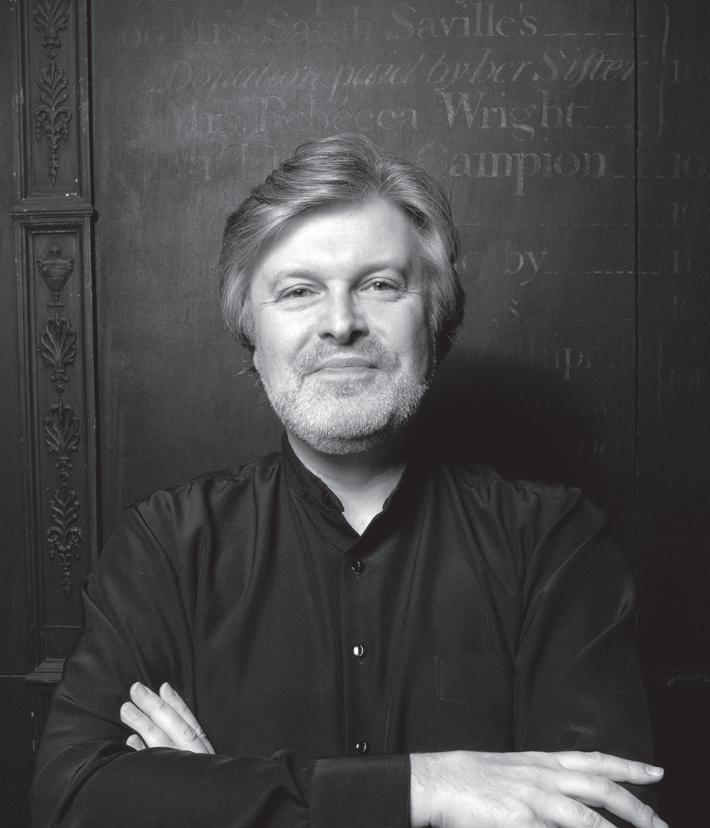
percussion instruments are used, covering tuned, untuned, skin, metal and wood sounds. Much of the music is fast and, although seamless, can be divided into a five-sectioned arch. It begins with a bold, fanfare-like ‘overture’ in which the soloist presents all the instrument-types used throughout. When the soloist moves to gongs and unpitched metal and wood, the music melts into the main meat of the first section – music of a more brittle, knottier quality, propelled forward by various pulse rates evoking an ever-changing heartbeat.
Advancing to drums and carried through a metrical modulation, the music is thrown forward into the second section characterised by fast ‘chugging’ quavers, irregular rhythmic shifts and the ‘hocketting’ of chords between one side of the orchestra and the other. Eventually the music winds down to a slow central section that pits cadenzalike expressivity on the marimba against a
All-pervasive heartbeats are emphatically pounded out on drums and timpani as the music reaches an unexpected conclusion.
floating tranquillity in the orchestra which hardly ever rises above ppp. Over and over again the orchestra repeats the four chords that accompany the words ‘Gaude, gaude’ from the plainsong’s refrain. They are layered in different instrumental combinations and in different speeds evoking a huge distant congregation murmuring a calm prayer in many voices.
A huge pedal crescendo on E-flat provides a transition to section four, which reintroduces material from the ‘hocket’ section under a virtuoso vibraphone solo. Gradually one becomes aware of the original tune floating slowly behind all the surface activity. The climax of the work presents the plainsong as a chorale followed by the opening fanfares, providing a backdrop for an energetic drum cadenza. In the final coda the all-pervasive heartbeats are emphatically pounded out on drums and timpani as the music reaches an unexpected conclusion.
Sir James MacMillan
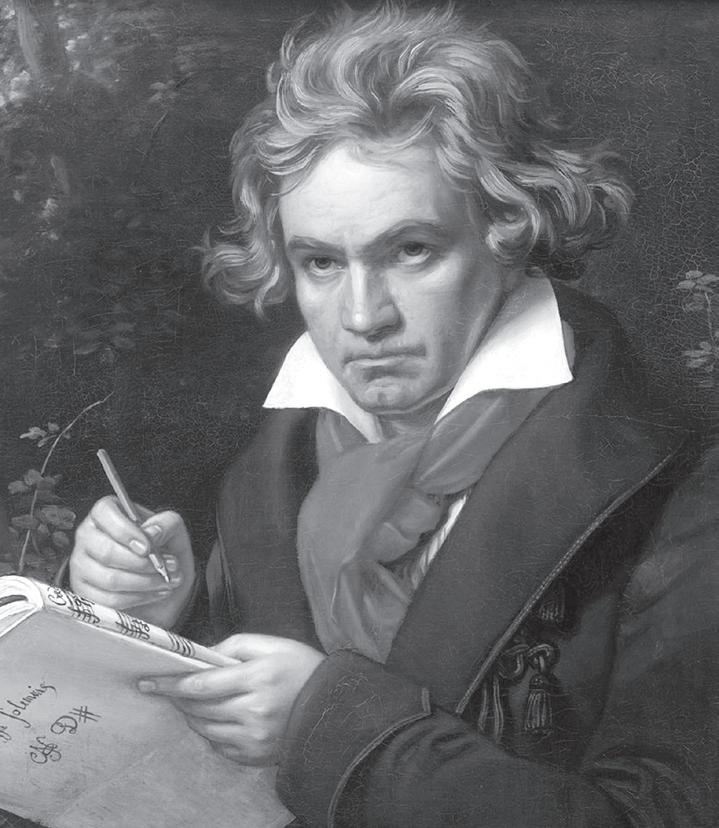
The heartbeats that permeate the whole piece offer a clue to the wider spiritual priorities behind the work, representing the human presence of Christ. Advent texts proclaim the promised day of liberation from fear, anguish and oppression, and this work is an attempt to mirror this in music, finding its initial inspiration in the following from Luke 21: ‘There will be signs in the sun and moon and stars; on earth nations in agony, bewildered by the clamour of the ocean and its waves; men dying of fear as they await what menaces the world, for the powers of heaven will be shaken. And they will see the Son of Man coming in a cloud with power and great glory. When these things begin to take place, stand erect, hold your heads high, because your liberation is near at hand.’
At the very end of the piece, the music takes a liturgical detour from Advent to Easter –right into the Gloria of the Easter Vigil, in fact
There’s surely no more famous opening to a piece of music than the four powerful unison notes that launch Beethoven’s Fifth Symphony.
– as if the proclamation of liberation finds embodiment in the Risen Christ.
So far, tonight’s concert has moved from the darkness of wartime destruction to the blinding light of resurrection and liberation. The concert’s final piece continues that same trajectory, itself representing a journey from fateful anguish – perhaps, indeed, the composer’s own – through determination to joyful release.
There’s surely no more famous opening to a piece of music than the four powerful unison notes that launch Beethoven’s Fifth Symphony (followed quickly, of course, by four more). When asked what they meant, Beethoven apparently (and famously) replied: ‘Thus Fate knocks at the door!’ That’s according to his secretary and biographer Anton Schindler, at least. And frankly, we probably shouldn’t take Schindler’s account too seriously. He was
Ludwig van Beethoven
almost certainly out to enhance his own reputation by painting his relationship with the revered composer as closer and more serious than it really was.
Nonetheless, the idea of a dark, destructive fate intruding on Beethoven’s life and work isn’t so far-fetched, and nor is the idea that Beethoven himself might have seen things in those terms. When he completed the Fifth Symphony in 1808, having worked on it for the previous four years, he’d been suffering from tinnitus and hearing loss for a decade, a condition that would only worsen. Six years earlier, the composer famously wrote an (unsent) letter to his two brothers, which we now call his Heiligenstadt Testament, in which he admitted to having contemplated suicide, finally resolving to live for the sake of his pioneering art.
His steadily increasing deafness also forced Beethoven to move away from the activities as a pianist for which he was best known in Vienna, encouraging him to develop his parallel reputation as a composer. Indeed, it was in the same concert in which his Fifth Symphony was premiered – on 22 December 1808, in an ill-conceived, icy-cold megaevent that also featured the premiere of his ‘Pastoral’ Symphony, his Choral Fantasy, the concert aria ‘Ah! perfido’, some piano improvisations and two movements from his Mass in C – that Beethoven gave his final performance as a soloist with an orchestra, in his own Piano Concerto No.4.
Another factor to add to this already complex mix of ideas behind the Fifth Symphony is the French Revolution, whose guiding tenets of liberty, equality and fraternity chimed harmoniously with Beethoven’s own political beliefs. It’s even been suggested that the four famous notes
of the Symphony’s opening are derived from the revolutionary Hymne du Panthéon by Luigi Cherubini, written in 1794.
What’s truly revolutionary, however, is what Beethoven does with those four opening notes. They go on to permeate every aspect of the Symphony’s first movement, sometimes plainly for all to hear, sometimes more submerged within the texture or structure, bringing a striking sense of unity and purpose to the music – perhaps representing inescapable fate, as Schindler suggested, or perhaps simply indicating meticulous craftsmanship. They even serve to herald the arrival of the movement’s far gentler, more lyrical second main theme, first heard flowing in the violins.
The slower second movement is a set of variations on two contrasting themes – the first a sweet, gentle melody for violas and cellos, the second a more assertive, militarystyle march. If the third movement is truly a Scherzo, it’s a dark, march-like one, though it also summons back the Symphony’s four opening notes in its strident main melody. Through a dramatic crescendo propelled forward by relentless timpani beats, Beethoven drives the listener from the sinister Scherzo straight into his finale, which erupts with a sense of blazing light and optimism. Schindler also speculated that the Symphony represented the story of a hero and his ultimately victorious battles against fate. Hearing the joy and triumph in the dazzling light of Beethoven’s final movement, it’s an interpretation that it’s hard to disagree with – and one that would go on to inspire countless later composers, from Mahler to Richard Strauss, Tchaikovsky to Shostakovich.
© David Kettle
In memory of Euan MacDonald MBE
(1974-2024)

Tonight’s concert is dedicated to the memory of Euan MacDonald MBE, co-founder of Euan’s Guide, who passed away last year after living with Motor Neuron Disease (MND) for 21 years.
Euan was the driving force behind Euan’s Guide, the award-winning disabled access review charity and website. What began as a response to his own frustration as a powerchair user at the lack of reliable information on accessibility, grew into a thriving, independent charity that now helps hundreds of thousands of disabled people, their families, friends and carers every year. Euan’s vision was simple but powerful: to make it possible for disabled people to plan trips, experiences and events with confidence. Over the last decade, the platform he inspired has delivered on that promise, improving lives and removing barriers for people across the UK and beyond.
Beyond Euan’s Guide, his impact was profound. In 2007 he co-founded with his father the Euan MacDonald Centre for Motor Neuron Disease Research at the University of Edinburgh, which has since become an internationally recognised network of more than 200 scientists and professionals working to understand and treat MND. The Centre leads the pioneering MND-SMART clinical trial, which now has over 750 participants.
Euan was also behind the creation of SpeakUnique, launched in 2012, which provides personalised synthetic voices for people who have lost or will lose their ability to speak. This innovation has enabled individuals to retain independence, identity and dignity at some of the most difficult points in their lives.
Those who knew Euan speak of his generosity, determination and inspirational spirit. Despite the many challenges he faced, he achieved an extraordinary amount in his lifetime and touched the lives of many. His legacy lives on through the projects he founded, the advances in MND research, and the countless disabled people who are able to experience more of the world thanks to his vision.
www.euansguide.com

Conductor Maxim
Emelyanychev
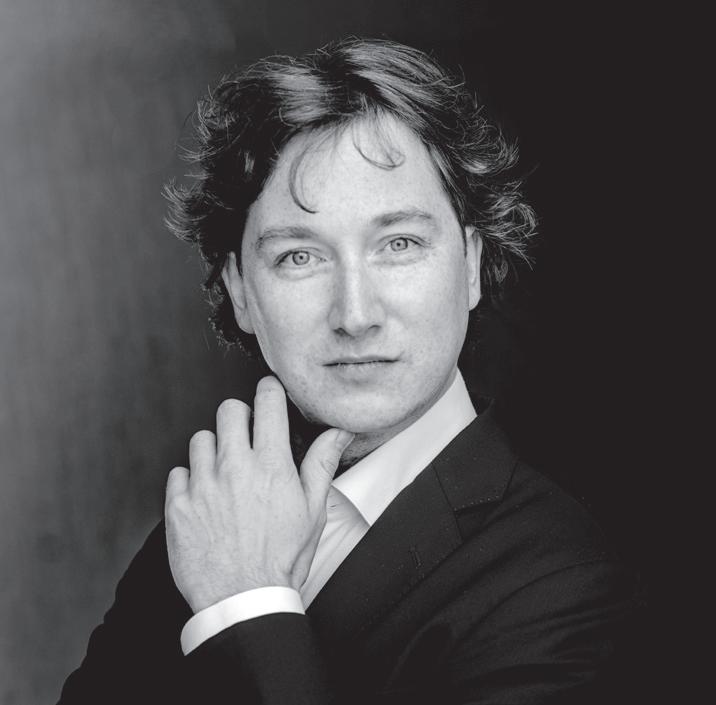
Maxim Emelyanychev has been Principal Conductor of the Scottish Chamber Orchestra since 2019. He is also Chief Conductor of period-instrument orchestra Il Pomo d’Oro, and from the 2025/26 season he becomes Principal Guest Conductor of the Swedish Radio Symphony Orchestra.
Born in Nizhny Novgorod, Emelyanychev made his conducting debut at the age of 12, and later joined the class of eminent conductor Gennady Rozhdestvensky at the Moscow Conservatoire.
Emelyanychev was initially appointed as the SCO’s Principal Conductor until 2022, and the relationship was later extended until 2025 and then until 2028. He has conducted the SCO at the Edinburgh International Festival and the BBC Proms, as well as on several European tours and in concerts right across Scotland. He has also made three recordings with the SCO, of symphonies by Schubert and Mendelssohn (Linn Records).
Emelyanychev has also conducted many international ensembles including the Berlin Philharmonic, Royal Concertgebouw Orchestra, Orchestra dell'Accademia Nazionale di Santa Cecilia, Deutsches Symphonie-Orchester Berlin, Rotterdam Philharmonic Orchestra, Finnish Radio Symphony Orchestra, Seattle Symphony and Orchestra of the Age of Enlightenment. In the opera house, Emelyanychev has conducted Handel’s Rinaldo at Glyndebourne, the same composer’s Agrippina as well as Mozart’s The Magic Flute at the Royal Opera House, Covent Garden, and Mozart’s Die Entführing aus dem Serail at the Opernhaus Zürich. He has also conducted Mozart’s Die Zauberflöte and Così fan tutte with the SCO at the Edinburgh International Festival. He has collaborated closely with US soprano Joyce DiDonato, including international touring and several recordings.
Among his other recordings are keyboard sonatas by Mozart, and violin sonatas by Brahms with violinist Aylen Pritchin. He has also launched a project to record Mozart’s complete symphonies with Il Pomo d’Oro. In 2019, he won the Critics’ Circle Young Talent Award and an International Opera Award in the newcomer category. He received the 2025 Herbert von Karajan Award at the Salzburg Easter Festival.
Colin Currie
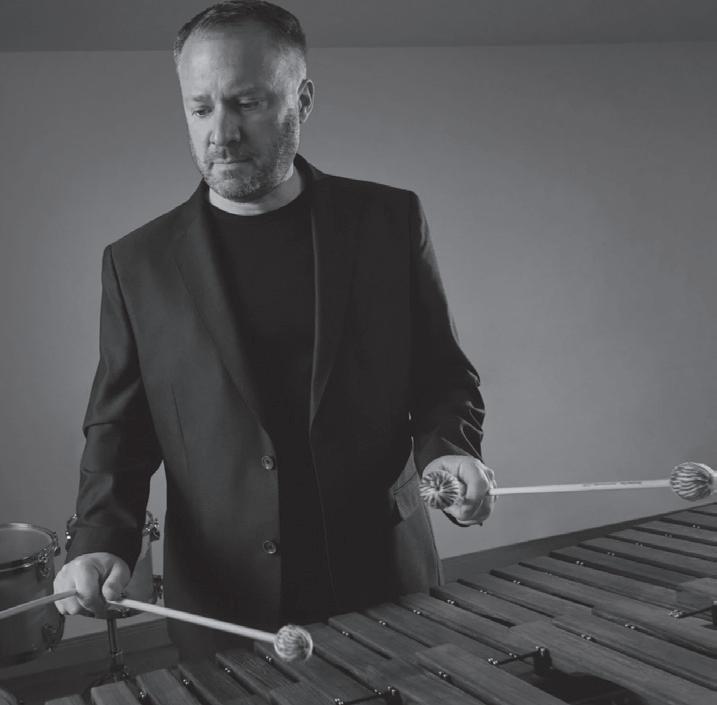
Described by Steve Reich as “one of the greatest musicians in the world today," and by Gramophone Magazine as “at the summit of percussion performance today”, Colin Currie is a solo and chamber artist who champions new music at the highest level. The soloist of choice for many of today’s foremost conductors, he performs regularly with the world’s leading orchestras and ensembles including the London Philharmonic, Royal Concertgebouw Orchestra, New York Philharmonic and The Cleveland Orchestra. With a particular focus on contemporary compositions, Colin has developed a close working relationship with many of today's most renowned composers. He has premiered works by Steve Reich, Elliott Carter, Louis Andriessen, HK Gruber, Sir James MacMillan, Einojuhani Rautavaara, Helen Grime, Jennifer Higdon, Rolf Wallin, Julia Wolfe and Kalevi Aho.
In addition to his career as a soloist, Colin is the founder of the Colin Currie Group, the Colin Currie Quartet, and Colin Currie Records — three ventures that celebrate and preserve the recent extraordinary developments in percussion music. As the leader of the Colin Currie ensembles, he regularly conducts performances with the Colin Currie Group, and has begun to expand his work as a conductor to work with other ensembles as well. For example, he recently conducted ‘Reich/Richter’ with the Britten Sinfonia at the request of the composer.
Colin began his musical studies at age five, and went on to graduate from the Royal Academy of Music in 1998. He was a finalist in the BBC Young Musician of the Year competition in 1994, and received the Royal Philharmonic Society Young Artist Award in 2000, was a BBC Radio 3 New Generation Artist between 2003 and 2005, received the Bortletti Buitoni Trust Award in 2005, and the Royal Philharmonic Society Instrumentalist Award in 2014. He is currently Visiting Professor of Modern Ensembles at the Royal Academy of Music, Associate Artist at the Royal Conservatoire of Scotland and Ambassador of Chamber Music Scotland. Based in his native Scotland, he enjoys cycling and the theatre in his spare time
For full biography please visit sco.org.uk
© James Glossop
Scottish Chamber Orchestra
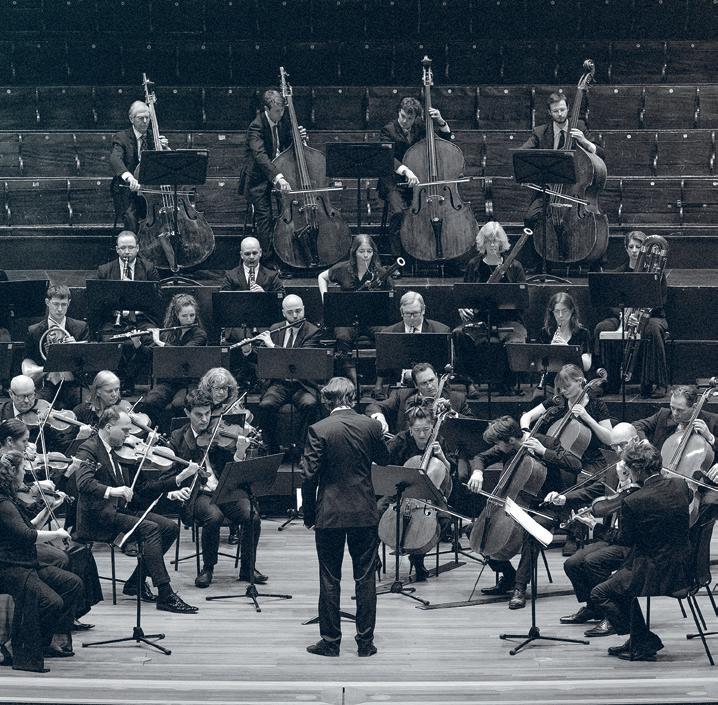
The Scottish Chamber Orchestra (SCO) is one of Scotland’s five National Performing Companies and has been a galvanizing force in Scotland’s music scene since its inception in 1974. The SCO believes that access to world-class music is not a luxury but something that everyone should have the opportunity to participate in, helping individuals and communities everywhere to thrive. Funded by the Scottish Government, City of Edinburgh Council and a community of philanthropic supporters, the SCO has an international reputation for exceptional, idiomatic performances: from mainstream classical music to newly commissioned works, each year its wide-ranging programme of work is presented across the length and breadth of Scotland, overseas and increasingly online.
Equally at home on and off the concert stage, each one of the SCO’s highly talented and creative musicians and staff is passionate about transforming and enhancing lives through the power of music. The SCO’s Creative Learning programme engages people of all ages and backgrounds with a diverse range of projects, concerts, participatory workshops and resources. The SCO’s current five-year Residency in Edinburgh’s Craigmillar builds on the area’s extraordinary history of Community Arts, connecting the local community with a national cultural resource.
An exciting new chapter for the SCO began in September 2019 with the arrival of dynamic young conductor Maxim Emelyanychev as the Orchestra’s Principal Conductor. His tenure has recently been extended until 2028. The SCO and Emelyanychev released their first album together (Linn Records) in 2019 to widespread critical acclaim. Their second recording together, of Mendelssohn symphonies, was released in 2023, with Schubert Symphonies Nos 5 and 8 following in 2024.
The SCO also has long-standing associations with many eminent guest conductors and directors including Principal Guest Conductor Andrew Manze, Pekka Kuusisto, François Leleux, Nicola Benedetti, Isabelle van Keulen, Anthony Marwood, Richard Egarr, Mark Wigglesworth, Lorenza Borrani and Conductor Emeritus Joseph Swensen.
The Orchestra’s current Associate Composer is Jay Capperauld. The SCO enjoys close relationships with numerous leading composers and has commissioned around 200 new works, including pieces by Sir James MacMillan, Anna Clyne, Sally Beamish, Martin Suckling, Einojuhani Rautavaara, Karin Rehnqvist, Mark-Anthony Turnage, Nico Muhly and the late Peter Maxwell Davies.
© Christopher Bowen
Including the radiant Glorias of Vivaldi and Poulenc
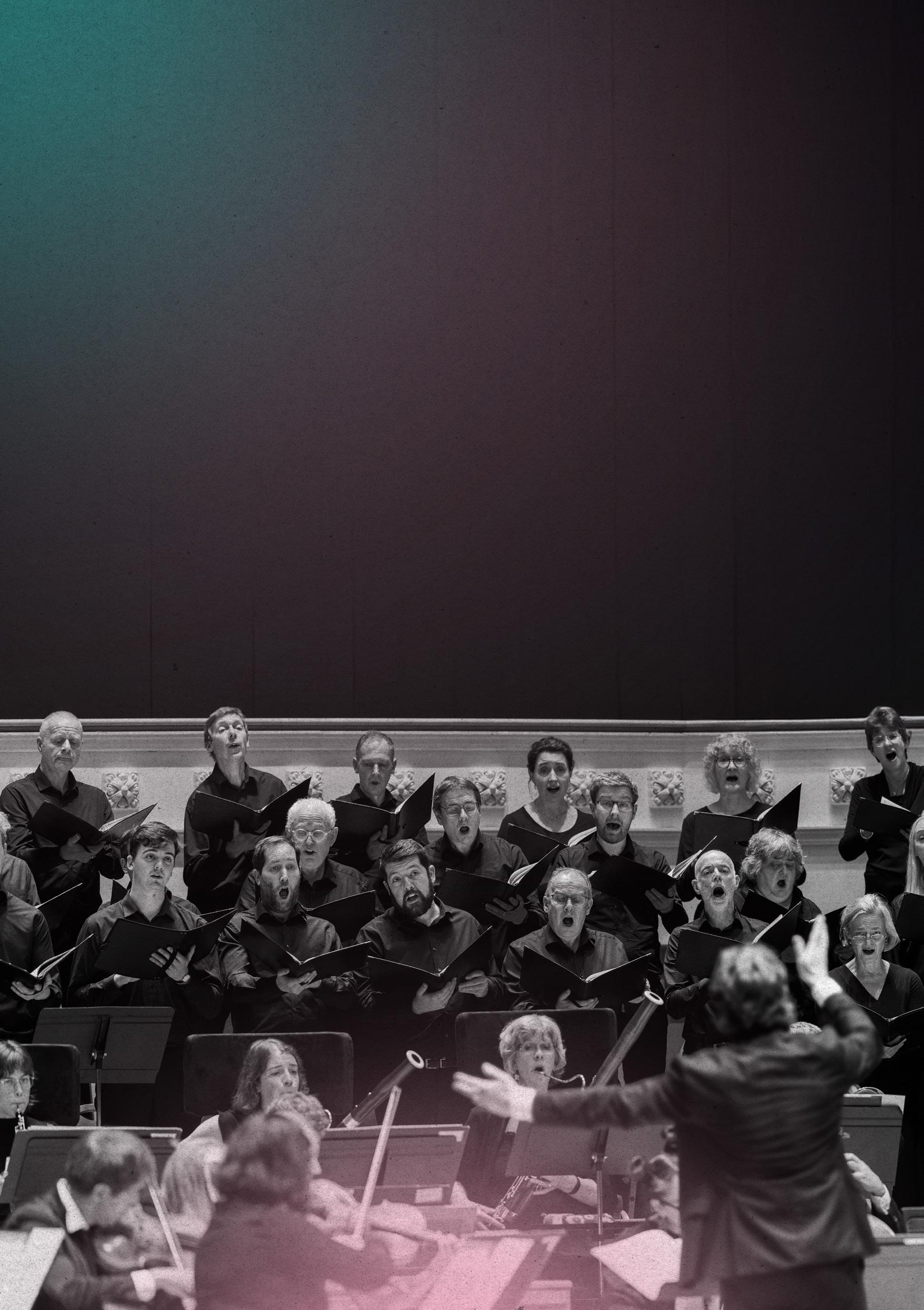
Maxim Emelyanychev conductor
Anna Dennis soprano
Rachel Redmond soprano
Alberto Miguélez Rouco countertenor
SCO Chorus
Gregory Batsleer chorus director
Sponsored by LEARN MORE


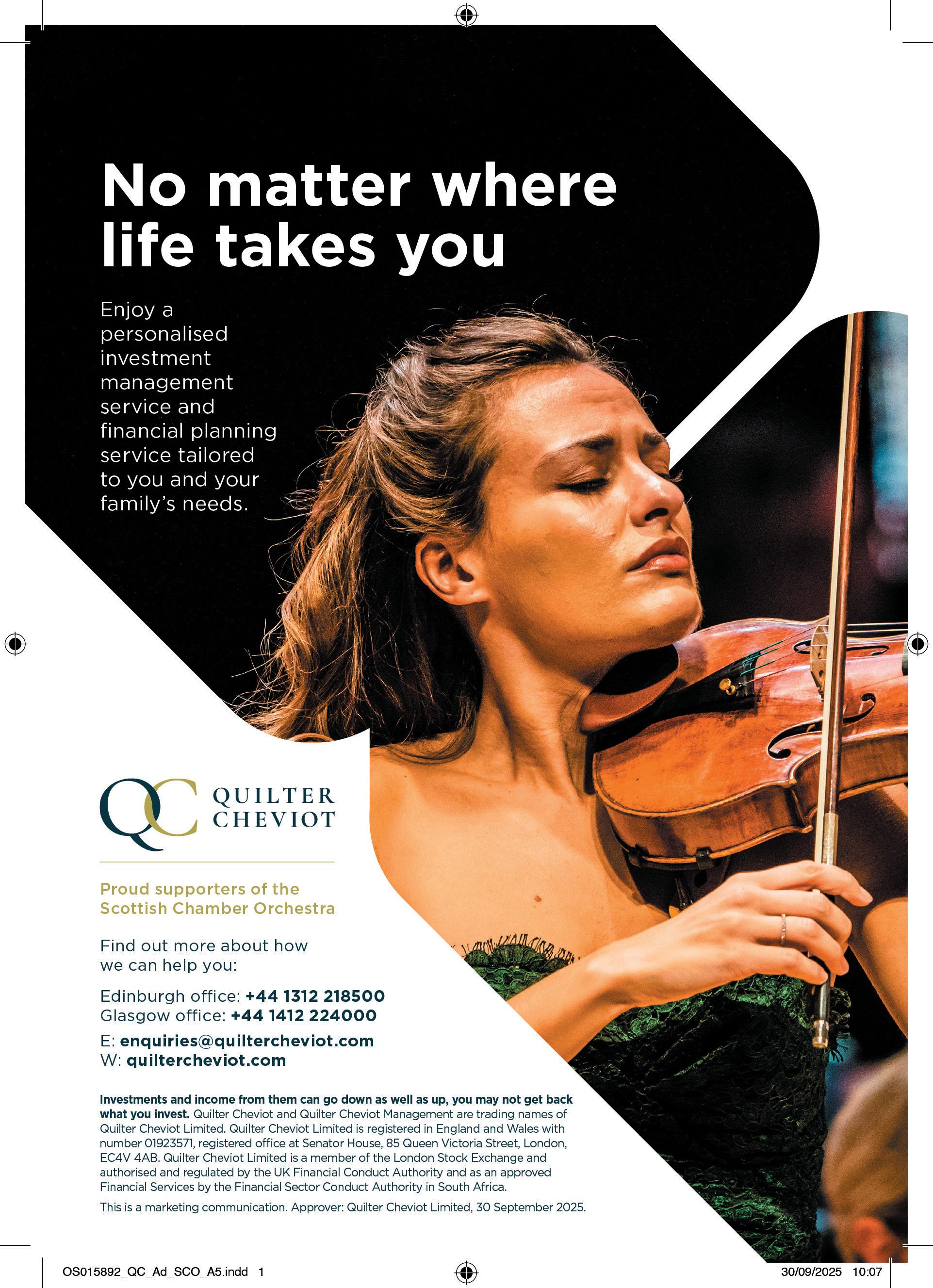
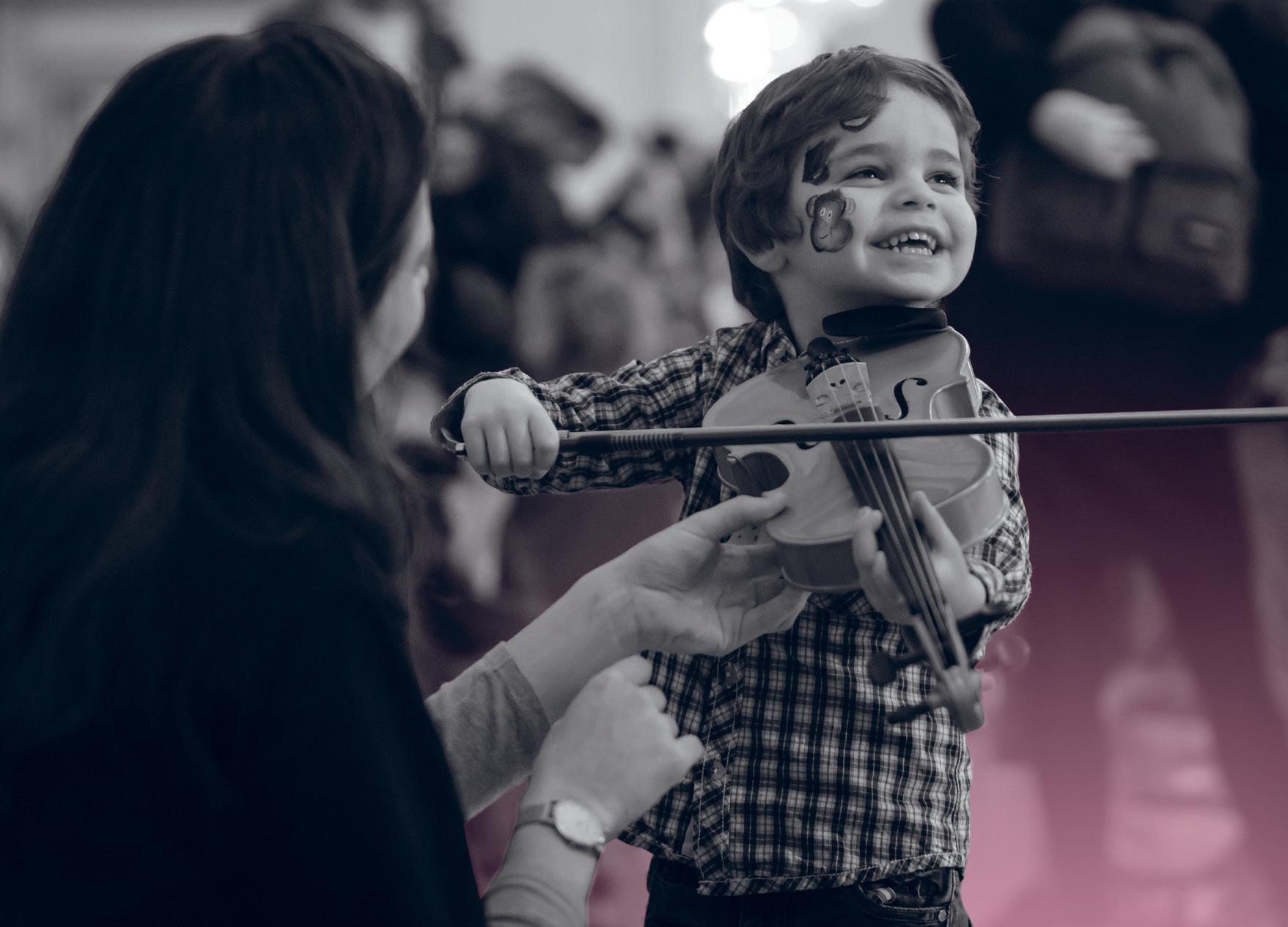

Support Us
Each year, the SCO must fundraise around £1.2 million to bring extraordinary musical performances to the stage and support groundbreaking education and community initiatives beyond it.
If you share our passion for transforming lives through the power of music and want to be part of our ongoing success, we invite you to join our community of regular donors. Your support, no matter the size, has a profound impact on our work – and as a donor, you’ll enjoy an even closer connection to the Orchestra.
To learn more and support the SCO from as little as £5 per month, please contact Hannah at hannah.wilkinson@sco.org.uk or call 0131 478 8364.
SCO is a charity registered in Scotland No SC015039.
Photo: Stuart Armitt
The
